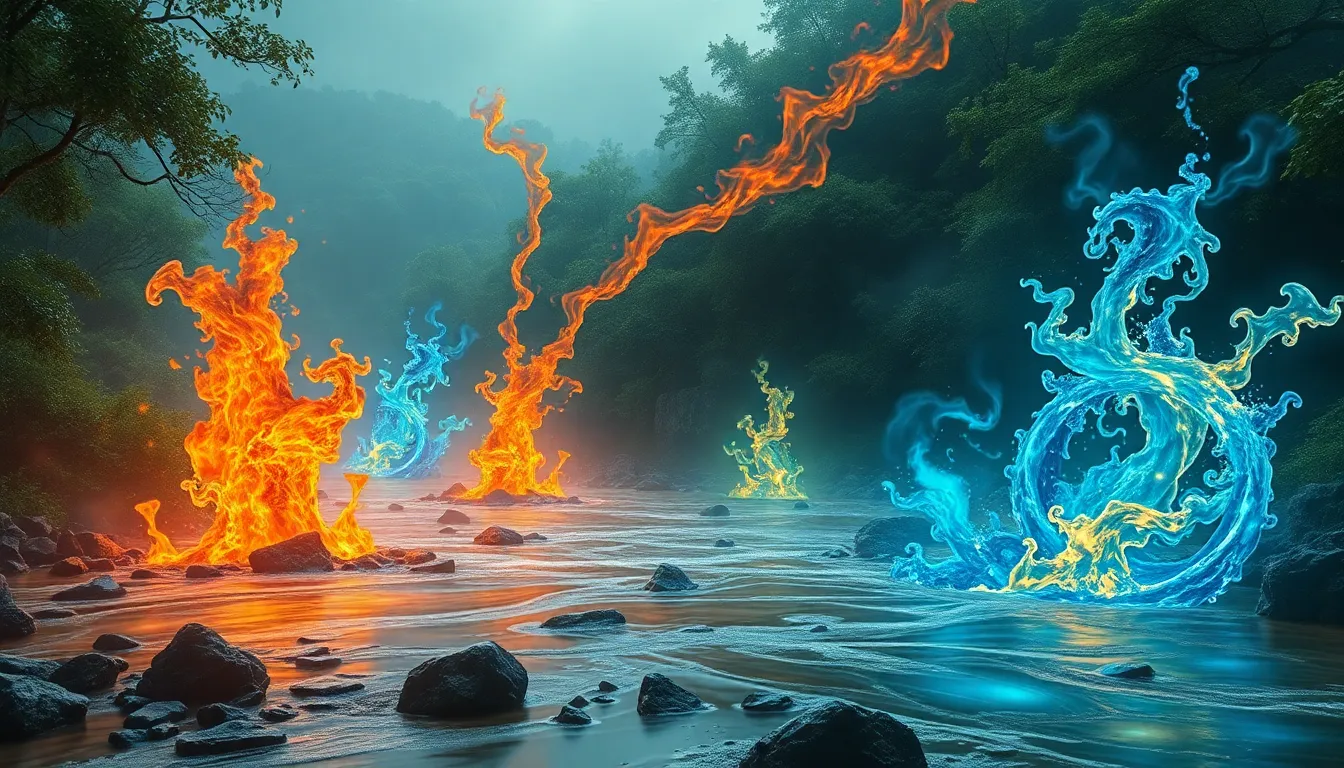The River of the Wild: Myths of Nature’s Untamed Spirit
I. Introduction
The concept of ‘The River of the Wild’ embodies the essence of untamed nature, symbolizing both the beauty and the ferocity of the natural world. Rivers, as dynamic entities, play a crucial role in shaping landscapes, nourishing life, and influencing human culture. Throughout history, they have been central to human mythology, serving as both lifelines and formidable forces.
Nature’s significance in human culture cannot be overstated. Myths and legends often revolve around natural elements, reflecting humanity’s relationship with the environment. This article explores the multifaceted symbolism of rivers in mythology, the personification of nature, and the lessons we can learn from these ancient tales.
II. The Symbolism of Rivers in Mythology
Rivers have held profound symbolism across various cultures, often representing life, death, and the passage of time. They are seen as:
- Life-giving forces: Many cultures revere rivers as sources of sustenance and fertility.
- Duality: Rivers can nurture life but also bring destruction through floods and storms.
Examples from different mythologies illustrate this symbolism:
- Greek Mythology: The River Styx represents the boundary between the living and the dead, emphasizing the river’s role in the afterlife.
- Native American Beliefs: Rivers are often considered sacred, embodying the spirit of the land and its inhabitants.
- African Myths: The Nile is revered for its life-giving waters, symbolizing abundance and fertility.
III. Nature as a Living Entity
In many cultures, natural elements are not merely inanimate objects but living entities with personalities and spirits. This anthropomorphism is a common theme in mythology:
- Spirits and Deities: Rivers are often associated with gods and goddesses who govern their flow and influence.
- Human Interaction: Beliefs about river spirits shape how communities interact with nature, fostering respect and reverence.
For instance, in Hindu mythology, the Ganges River is personified as the goddess Ganga, revered for her purity and life-giving properties. Such beliefs encourage a symbiotic relationship between humans and their environment.
IV. Tales of the Wild: Legendary Rivers
Several rivers are steeped in legend, each telling unique stories that reflect cultural values and beliefs. Here are three notable examples:
- The Amazon: Known as the River of Spirits, the Amazon is central to many indigenous myths, often depicted as a living entity that harbors both wisdom and danger.
- The Ganges: This sacred river is not only a physical entity but also a spiritual journey for millions, with stories of purification and rebirth linked to its waters.
- The Mississippi: A river of history, it is the backdrop for numerous American folklore stories, embodying the spirit of exploration and adventure.
V. The Role of Water Spirits and Deities
Water spirits and deities play significant roles in various cultures, often embodying the characteristics of the rivers they are associated with. Here’s an overview:
- Naiads: In Greek mythology, these water nymphs are protectors of rivers, springs, and fountains, often depicted as beautiful maidens.
- Mermaids: Found in various cultures, these beings symbolize the allure and danger of the water, often warning humans of the river’s power.
Stories of encounters with these spirits often carry moral implications, teaching lessons about respect for nature and the consequences of human actions. For example, many tales highlight the need for harmony with water spirits to ensure bountiful harvests and safe navigation.
VI. Wildness and Untamed Nature in Folklore
The concept of ‘wildness’ is deeply embedded in folklore, representing a spiritual and natural state of being. Folktales often emphasize the power of untamed landscapes:
- Spiritual Connections: Many cultures view wild places as sacred, where the spirit of nature thrives.
- Human Limitations: Folklore frequently depicts encounters with wild nature as a reminder of humanity’s vulnerability and the need for humility.
These stories reinforce the notion that humanity must live in balance with the wild, acknowledging its power and unpredictability.
VII. Lessons from Myths: Respecting Nature’s Power
Myths surrounding rivers impart valuable moral teachings that remain relevant today:
- Environmental Wisdom: Many river myths emphasize the importance of stewardship and respect for natural resources.
- Caution and Respect: Tales often illustrate the consequences of disrespecting nature, serving as warnings against exploitation.
These lessons are increasingly pertinent in modern conservation efforts, reminding us of our responsibility to protect the environment for future generations.
VIII. The Modern Interpretation of Untamed Nature
Contemporary views on nature are greatly influenced by these ancient myths. There is a resurgence of interest in wild spaces and the need for their preservation:
- Environmental Movements: Many conservation efforts draw inspiration from indigenous beliefs and myths that honor the natural world.
- Urbanization Challenges: As cities expand, the perception of wild spaces shifts, often leading to a disconnect from nature.
Understanding and integrating mythological perspectives can foster a deeper appreciation for the natural world and encourage sustainable practices.
IX. The Future of Wild Rivers: Balancing Myth and Reality
Wild rivers face numerous threats, including pollution, damming, and climate change. Preserving these ecosystems is crucial for maintaining biodiversity and cultural heritage:
- Conservation Efforts: Engaging with local communities and honoring traditional beliefs can enhance conservation strategies.
- Mythology as Motivation: Myths can inspire a conservation mindset, encouraging people to see the intrinsic value of wild rivers.
By balancing myth and reality, we can work towards a future where the spirit of the wild is respected and preserved, ensuring that our rivers continue to flow with life and inspiration for generations to come.



